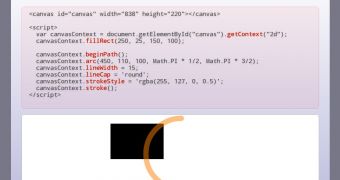There’s certainly a lot of talk about HTML5 and, while lately it has focused on the video aspect, there’s plenty to like in the proposed web standard that is starting to see real traction on the web. But with things moving so fast, even those who have been keeping an eye on the developments may find some new features surprising.
In that sense, Google has now launched HTML5 Rocks, a website dedicated to showcasing the best that HTML5 and some other emerging web technologies have to offer. And if you’re getting a sense of deja vu, yes, Apple did the very same thing a couple of weeks ago.
“Because HTML5 and its related technologies cover so much ground, it can be a real challenge to get up to speed on them. That’s why today we're sharing HTML5 Rocks, a great new resource for developers and teams looking to put HTML5 to use today, including more information on specific features and when to use them in your apps,” an announcement on the Chromium blog read.
The site is meant as a resource tool for developers, but it can be useful or at least enlightening for anyone with an interest in the web. The Interactive Presentation, itself written in HTML5, does a good job at covering all the exciting new stuff in HTML, CSS and JavaScript. There’s some stuff not covered by the proposed HTML5 spec thrown in there as well, like WebGL, which brings hardware accelerated 3D graphics to the web.
If that piques your interest, you can start experimenting with the HTML5 APIs in the Code Playground section. You get some nice code examples for each API and you can see them in action on the same page. You can edit the code or even add completely new one, so it’s a useful sandbox for getting started.
Finally, if you want a more guided approach, you can check out the tutorials section, which features step-by-step instructions for plenty of the new features in HTML5. Google says it will add more resources over time. Unlike Apple’s demo intended to showcase the ‘openness’ of HTML5, which only worked with Safari, Google’s presentation really is open and works with any browser, to the extent it supports the HTML5 features used.

 14 DAY TRIAL //
14 DAY TRIAL //